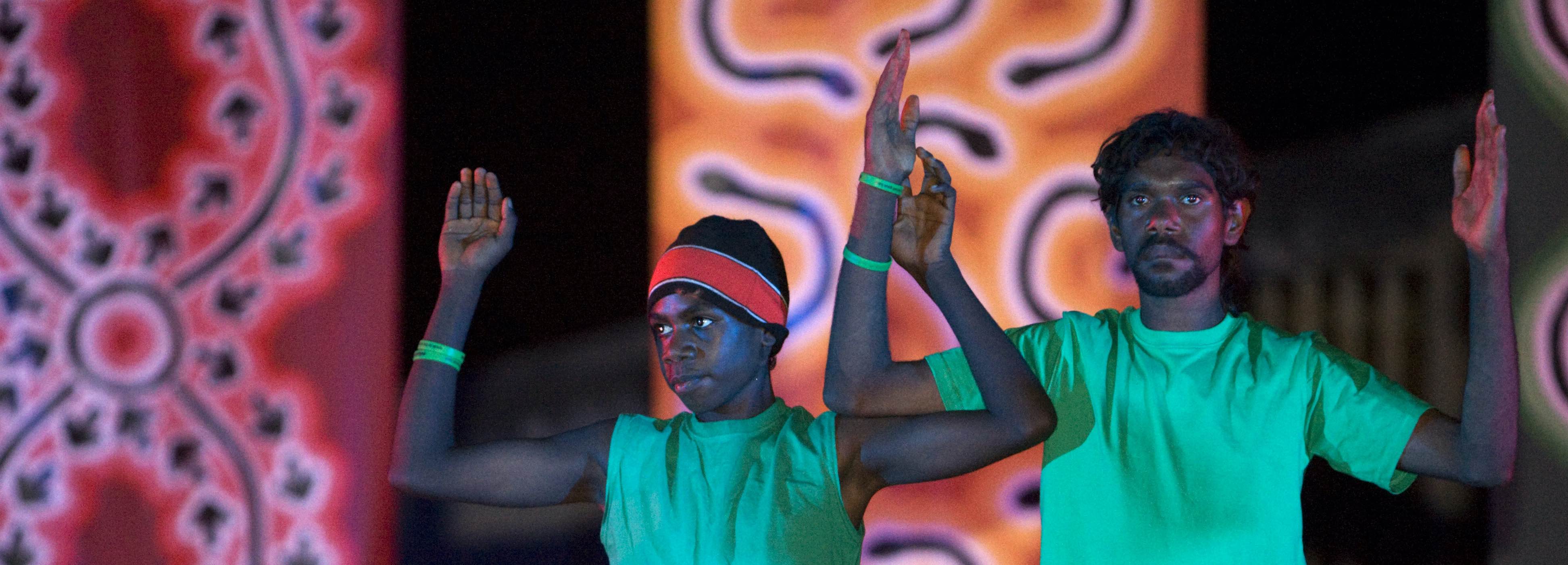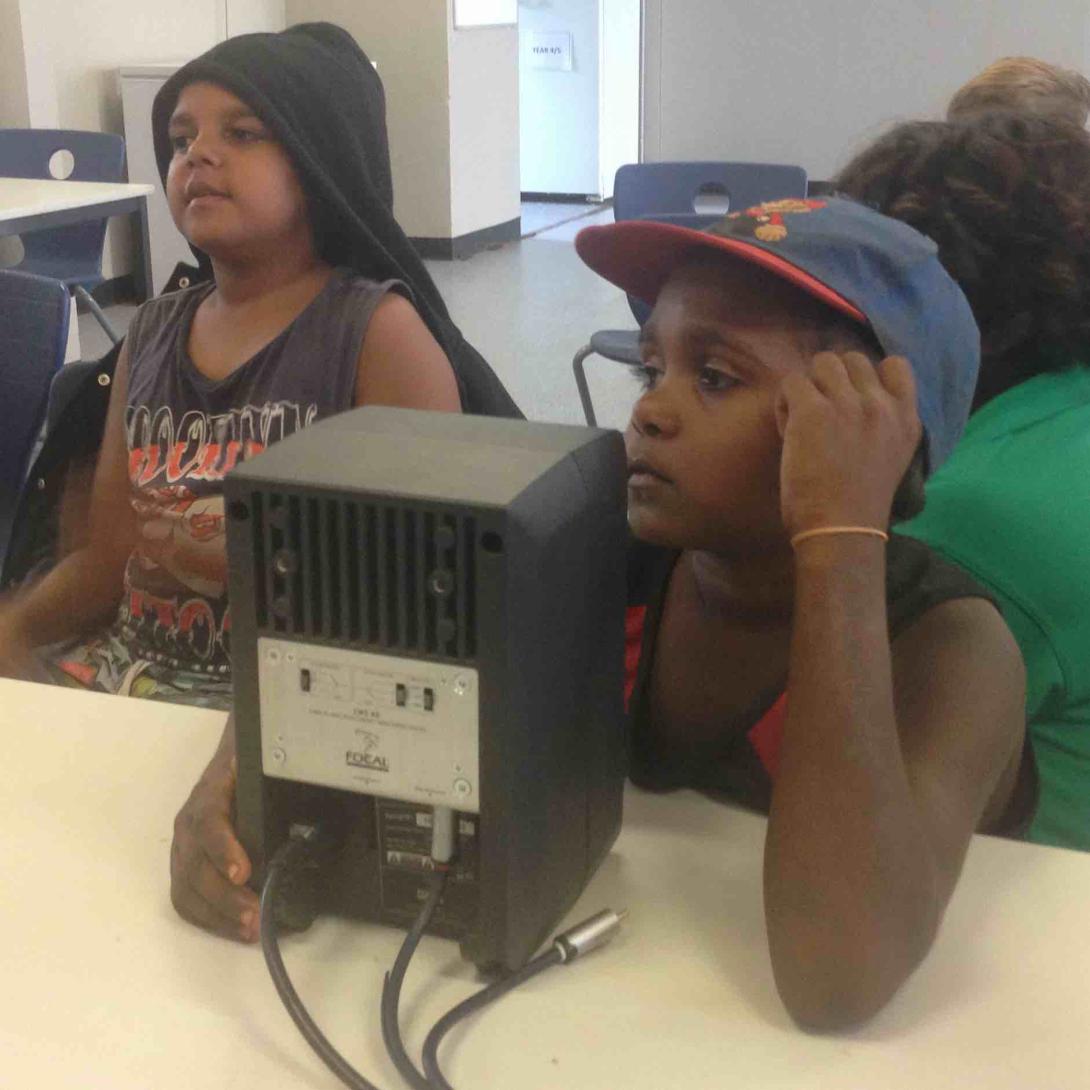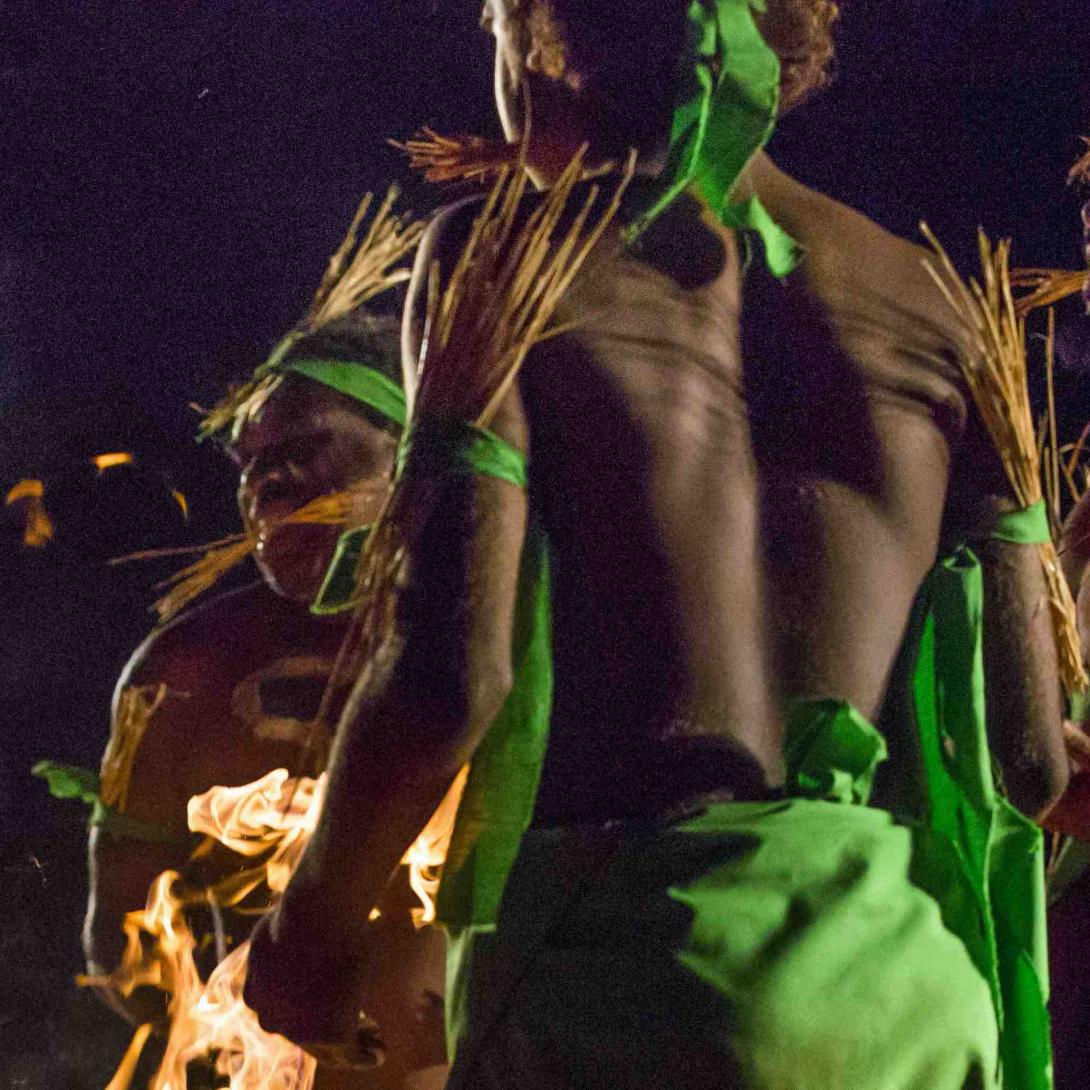Warlu (Fire) / New Beginnings - 2007, 2012, 2014, 2016, 2021
2007 Milpirri - Kurdiji
Warlu (Fire) Green Youth Dance - including Coat of Arms
Description of Dance
Steve Wanta Jampijinpa Patrick talks about the symbolism as found in the Australian Coat of Arms and that the same symbols are found in the Kurdiji (Shield) Ceremony.
Senior boys and girls dance to the theme of fire, its cleansing properties and the way it is used to clear away the dead growth to make way for the new - “the fire is the future and the present is the flame”
Choreography
Nick (Japanangka) Power and Jenelle (Nakamarra) Saunders
2012 Milpirri Pulyarani
Warlu (Fire) Youth Dancers
Description of Dance
This fire dance comes from the beginning of the Pulyaranni (slow-moving winds) story. This is connected to several different Jukurrpa stories. Here two men light a fire to flush out animals for hunting. The fire burns out of control and they need to ask the different winds, (North, South, East, and West) to work together to create a cool or slow-moving fire to assist them in their hunting. This dance was also used to teach the ownership of each wind to its skin group: Kakarra (East) - Green, Kulirra (South) - red, Kalirra (West) yellow, and Yatijarra (North) Blue. Pulyurani denotes a slow unfolding of things, reminding us to take our time and not jump into everything new.
Choreography
Jess (Napangardi) Devereux
2012 Milpirri - Pulyarani
Warlu (Fire) New Start, New Beginning
Description of Dance
After the country is burned through a slow-burning process, the new growth brings food and new life, a new beginning. This dance teaches us the need to work together, in harmony, in order to get the best fresh start.
Choreography
Nick (Japanangka) Power
2014 Milpirri - Pulyarani
Warlu (Fire) Youth
Description of Dance
In this dance, the action comes from fire. The dance reinforces the four directions in Warlpiri and English. These four directions are the places the winds came from that controlled the fire in the Ngapa Jukurrpa. Each wind belongs to a different colour group. The north wind is blue, the East wind is green, the South wind is red, and the West wind is yellow. The original story tells of two men, a Japaljarri (yellow group) and a Japangardi (green group) who light a fire to flush out food from then undergrowth. They ask the four winds to assist them. This fire dance was first created for 2012 Milpirri.
Choreography
Original - Jess (Napangardi) Devereux. Adapted by Kelly (Napurrula) Beneforti
2016 Milpirri - Kurdiji
Warlu (Fire) / Wake Up, Wake Up
Description of Dance
This dance is about the importance of joining in the new day and the life of your community. This is reflected through fire, which cleanses the bush and creates a new beginning and new growth. The sun itself is fire thrown into the sky, denoting a new day.
The young dancers begin sleeping and won’t wake up, even though the Male dancer rustles them. They are missing out on the New Day!
Finally, the dogs and beeping car horns wake them up, and the green group dancers call on everyone in the group to get up and start the day. Waking up from a good night's rest, we are ready to do active things, to be a part of the day.
They do the fire dance, a recurring Milpirri dance that imitates the qualities of fire. They also show the action of throwing fire into the sky, representing the sun and morning star rising, as seen in the Men’s fire dance.
The diagonal line with dance actions passed from one student to another reflects the fast movement of fire through the bush.
The final dance circle celebrates the promise of the New Day, and the joy of being present in your family and community life.
Choreography
Kelly (Napurrula) Beneforti
2021 Milpirri - Yinapaka
Fire - Preparing the Ground
Description of Dance
Yinapaka, a site of Sky Ceremony in the Milpirri Jurkurrpa. Yinapaka is where the birds gather when awaiting to learn how to fly higher and be superior hunters. This short dance signifies preparing the ceremony dancing ground by burning off the grass and asking for the wind to assist. A large circle is formed and the movement unites everyone with a rhythm punctuated by two simple arms movements showing the flames of the fire. Each cycle of movement calls to the four winds from all cardinal point directions: Yatijarra (North/ Blue), Kakarra (East/Green), Kulirra (South / Red) and Kularra (Yellow/ West).
*Milpirri 2021 was reimagined to suit the current COVID circumstances. The dance in this video is from a showing at Lajamanu school. They are not complete dances.
Choreography
Original Choreography: Jess Devereux
Wind Directions added by Kelly Beneforti



